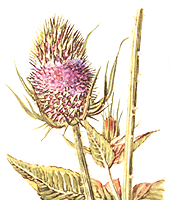Butterbur
Janice, a 35-year-old executive, describes her migraines as incredibly intense. 'It's like someone driving a steel spike slowly into the middle of my head,'#157; she recounts.

Janice, a 35-year-old executive, describes her migraines as incredibly intense. "It's like someone driving a steel spike slowly into the middle of my head," she recounts. The excruciating pain and accompanying nausea often force her to spend long periods in her darkened bedroom away from family, friends, and work.
Janice is one of 18 million women and 5.6 million men over the age of 12 who suffer from migraines. This recurrent form of headache plays no favourites. It can affect a wide range of people, from your next-door neighbour to Vincent Van Gogh to Whoopi Goldberg. Although many prescription and non-prescription drugs help prevent and treat migraines, they all are fraught with potential side effects. Fortunately for the migraineur, butterbur, a new type of herbal medicine, has emerged as a helpful option for those afflicted with this disorder.
Butterbur (Petasites hybridus) is a shrub found throughout Europe as well as in parts of Asia and North America, whose leaves, roots, and rhizomes contain natural plant chemicals (petasin and isopetasin) that have anti-inflammatory, anti-spasmodic, and pain-relieving actions.
Several high quality studies support the use of standardized butterbur extract in the prevention of migraine headaches. In one clinical study from the International Journal of Clinical Pharmacology and Therapeutics, 60 patients with migraines were randomized to receive 50 milligrams of a specialized butterbur extract or placebo twice a day for 12 weeks. Those taking the butterbur experienced a whopping 60 percent reduction in frequency of migraine attacks, unlike those taking placebo medications.
In another paper presented at the 54th Annual American Academy of Neurology Meeting in 2002, Dr. Richard B. Lipton and associates confirmed butterbur's efficacy in treating migraine headaches. They determined that 150 mg of butterbur per day for three months significantly reduced the number of migraine attack counts compared to placebo. Moreover, those employing the higher dose of butterbur were able to decrease the amount of acute migraine medication they typically ingested by 55 percent.
In its raw form, butterbur (like the herb comfrey) contains the dreaded PAs pyrrolizidine alkaloids - which are considered by many experts to be toxic to the liver. As such, it is important to employ only a carbon dioxide extract of butterbur rhizome, standardized so that it contains 15-percent petasin and isopetasin, independently verified by the manufacturer to be free of PAs. Adults dealing with the agony of migraine headaches can employ such a product at doses of up to 150 mg per day. Although PA-free brands of butterbur have been shown to be without serious side effects, those who are pregnant, lactating, or suffering from liver disorders should not use this herb.
Like many migraineurs, Janice now reaches for butterbur when she feels a migraine coming on and is out of the darkened bedroom and into a more normal life.




